► Fourth-gen Mini gets a soft-top variant
► Three petrol engines, but no manual
► Still as fun and stylish as ever?
Despite being a country renowned for such bleak weather, the UK is one of the biggest markets for convertibles. In fact, Brits bought more of the previous-generation Mini Convertible than anywhere else in the world.
It’s now time for the new fourth-generation model to hit the scene, and it’s now got a new name – the Mini Cooper Convertible – and production of the drop-top has moved back to Oxford. How very British.
Rivals these days are few and far between outside of the cheaper Fiat 500C, two-seat Mazda MX-5 sports car or Volkswagen T-Roc Cabriolet SUV-drop-top amalgamation. So does the Mini still have a place?
At a glance
Pros: Brilliantly stylish, great cabin, fun to drive
Cons: Firm ride, gearshift paddles really should be standard, four seats – at a real push
What’s new?
Like the petrol Mini Cooper hatch this new model shares so much in common with, this is an adaption of the previous Mini Convertible and its platform. The packaging is almost identical, though much has changed – the only element carried over unchanged are the front doors.
The newly designed front grille and circular LED headlights (available optionally with three customisable light signatures) come together to form a face that’s unmistakeably Mini – yet there’s clear evolution from the previous model.
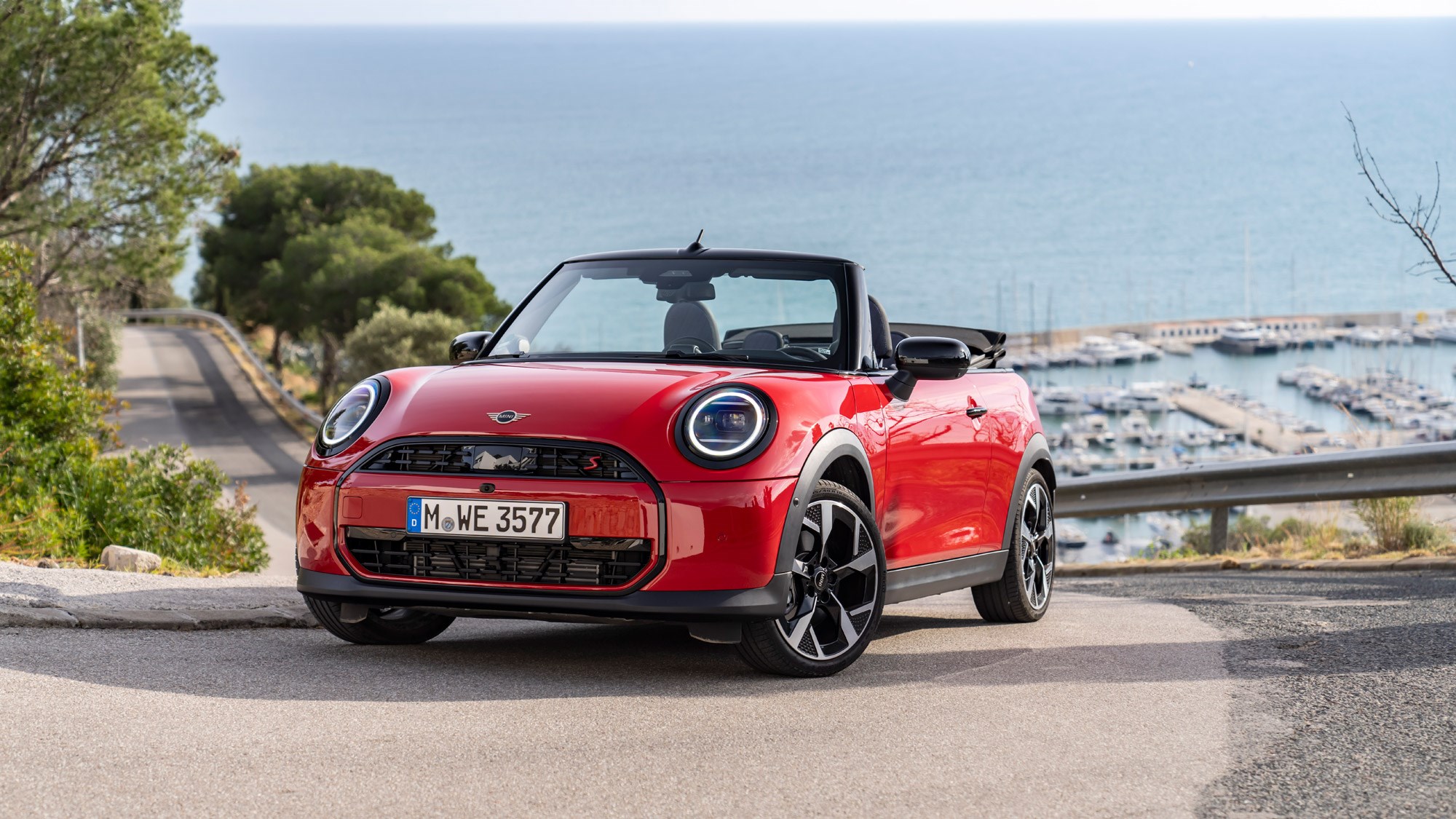
Move around to the rear, however, and it looks suspiciously similar to the previous model with Mini having elected not to match the rear end for the convertible version. In particular, the rear lights differ significantly to the hatch. The interior is really the biggest change, with Mini’s new OLED touchscreen dominating the interior and being a significant improvement over the previous car’s system which saw a rectangular touchscreen awkwardly wedged into the circular display.
What are the specs?
Mini has reportedly cancelled plans for a new Mini Electric Convertible after its flawed attempt of testing the water in 2023, so engine choices for this new model are purely petrol. There’s the Cooper C, Cooper S and John Cooper Works, all coming with a seven-speed automatic gearbox and front-wheel-drive, mirroring the line-up of the hatch. Yes, no manual Mini these days, which is disappointing.
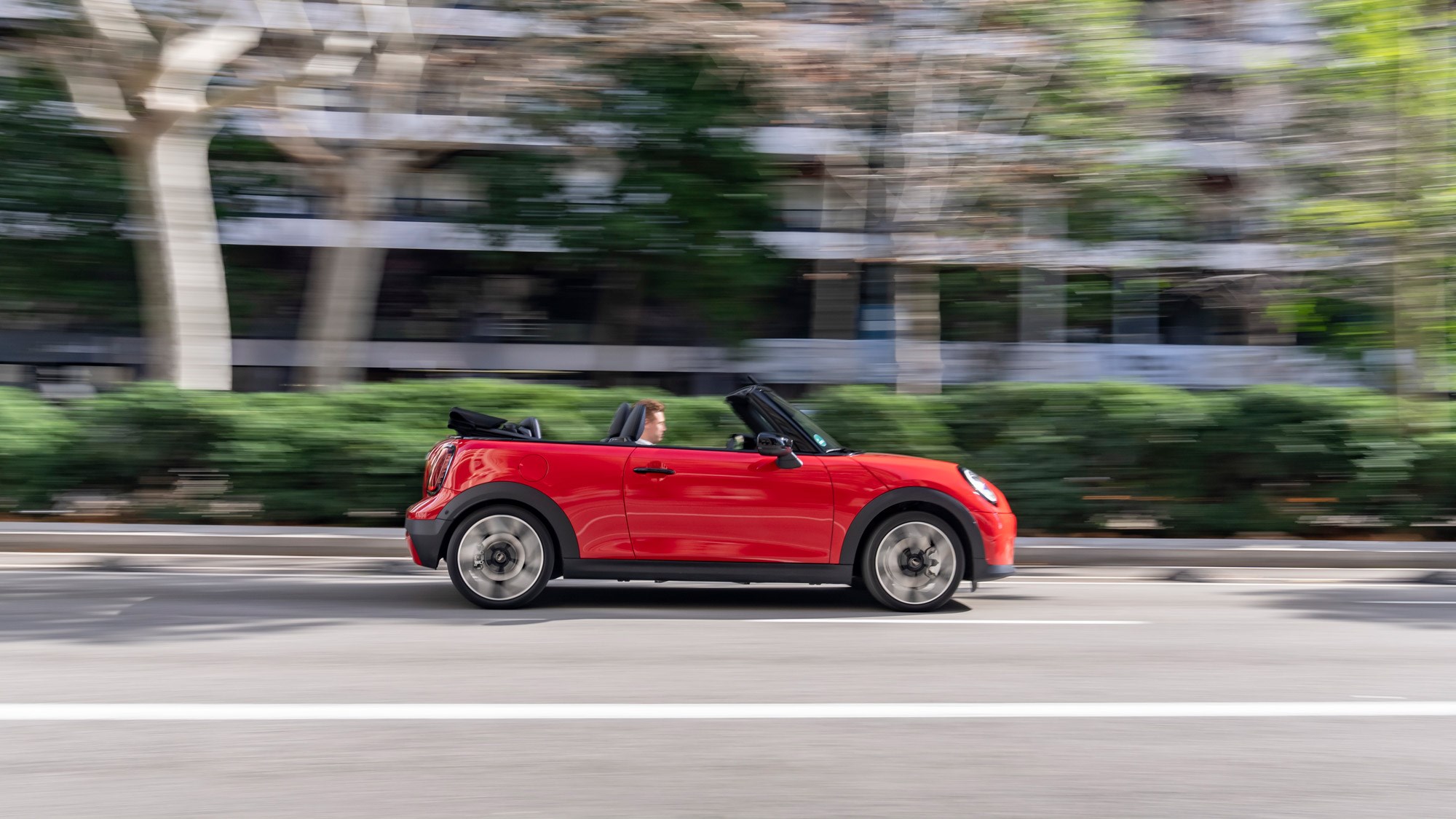
The C uses a 161bhp 1.5-litre petrol engine, enabling an 8.2-second 0-62mph time, but it’s the Cooper S that will account for the most sales – using a 201bhp 2.0-litre unit dropping the 62mph sprint time to 6.9 seconds. At the top of the range sits the John Cooper Works, utilising a 228bhp 2.0-litre petrol unit that shaves a further half a second off the 0-62mph time to 6.4 seconds.
How does it drive?
So far we’ve only driven the Cooper S version, and in Exclusive trim. I’ll get this straight out of the way by saying this is not the model you should go for – instead go for a ‘Sport’ trim as this gets a sports automatic gearbox and – crucially – gearshift paddles. Other versions of the Cooper C and Cooper S don’t get these.
The gearbox is a bit hesitant in the standard settings but if you put it in ‘Go Kart’ mode, it becomes far too keen and holds onto gears for too long even if you aren’t wanting to push it too much. It becomes quite unpleasant and with no option to manually change gear, actually quite infuriating.
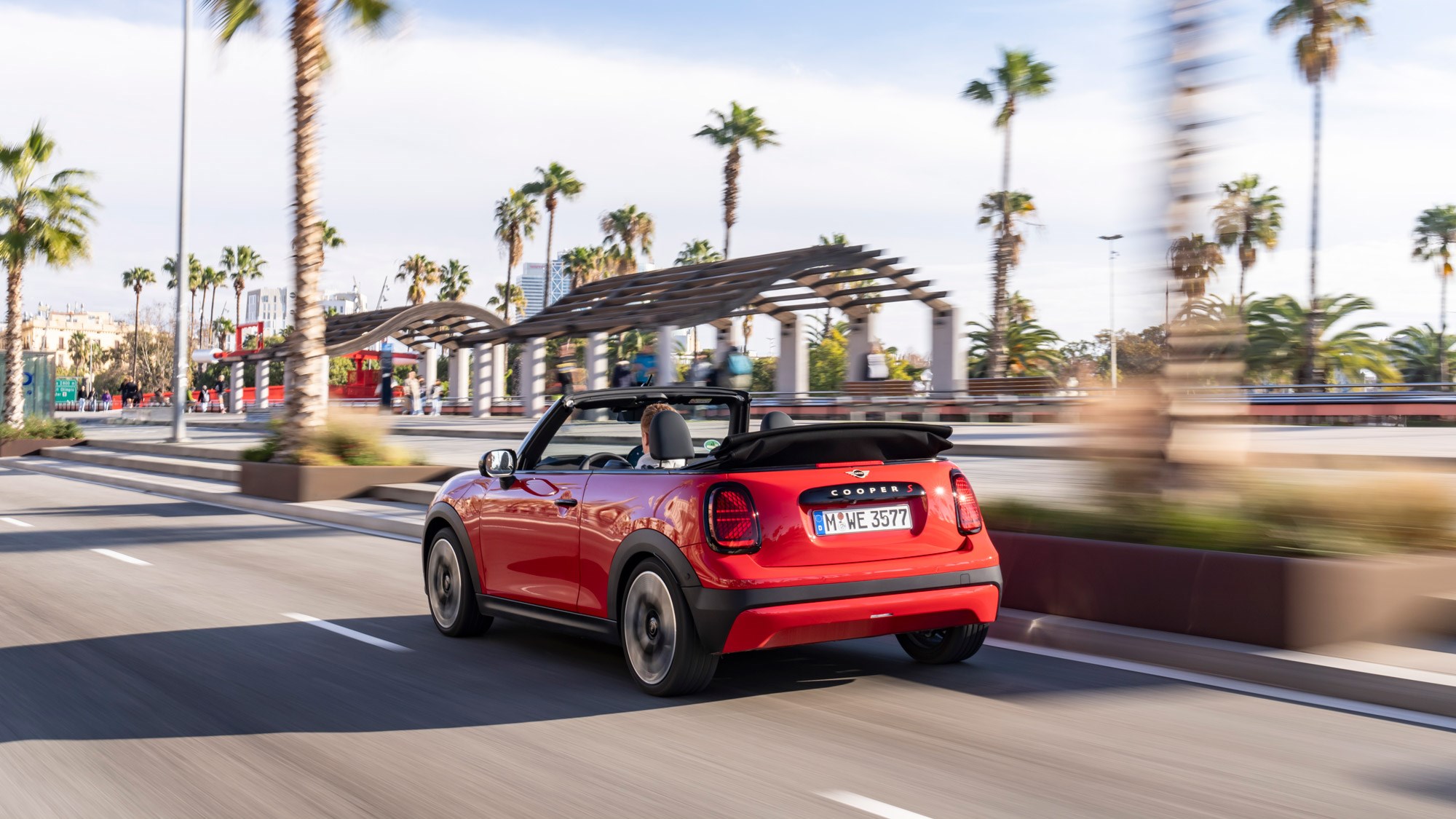
Roof down, the four-cylinder engine has a nice, raspy tone with hints of turbo whoosh – all of which deliver the requisite character you’d expect from a Mini. Allow it to settle down however, and refinement from the engine is perfectly adequate. At lower speeds, there’s little to no wind buffeting with the top down. Climb above 50mph and you’ll begin to notice the elements, yet it’s still quiet enough to enjoy a conversation.
In fact, our main gripe from a comfort point of view is the ride quality. In order to accommodate the additional weight of the Convertible, Mini has had to change the chassis settings from the Hatch. This means you’ve got a firm ride that crashes through larger bumps with a jarring feel. Smaller undulations and imperfections are dealt with better, but you’ll want to avoid any significant blemishes in the road surface.
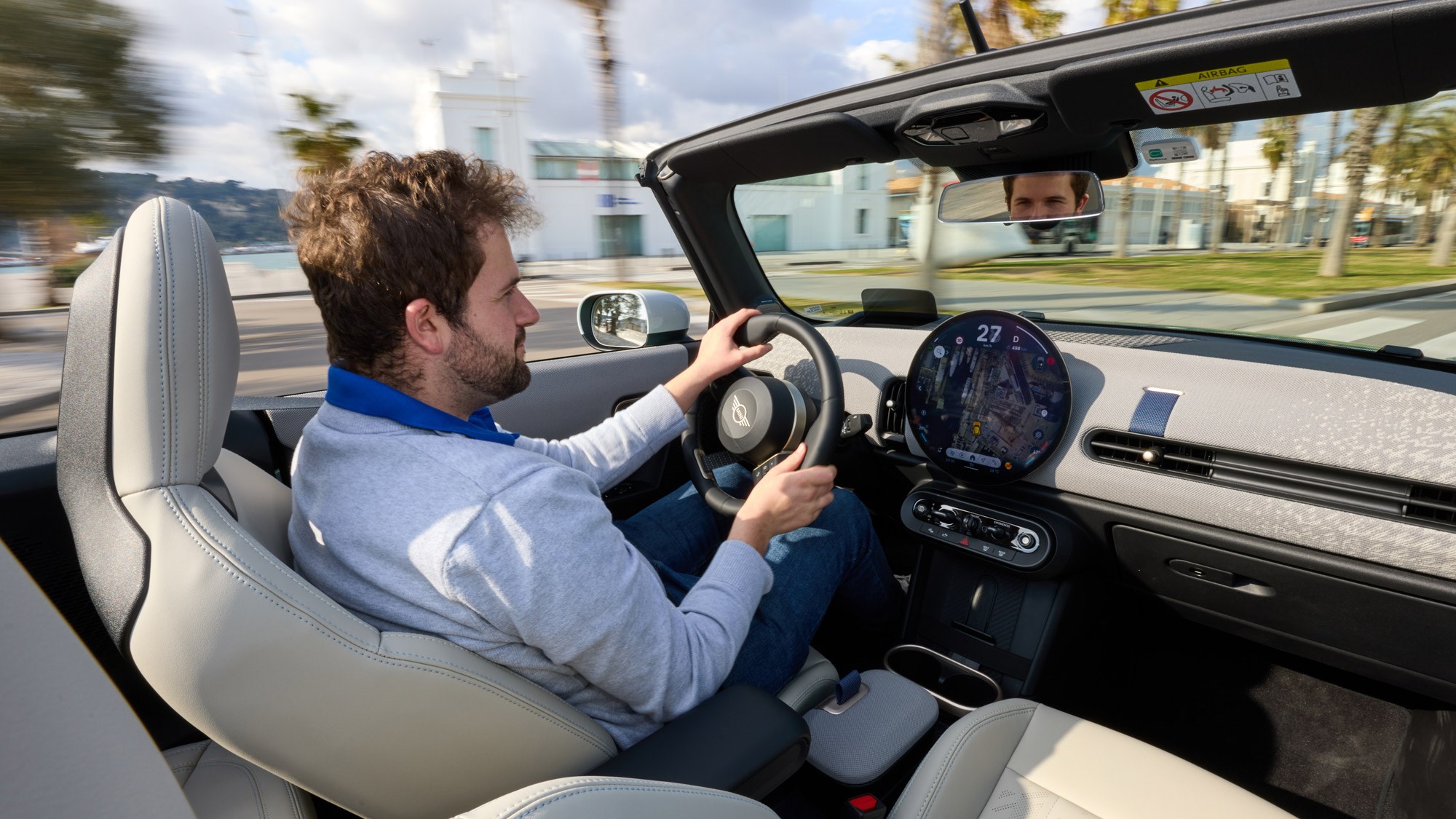
The flip side is that the Mini Convertible feels tight and agile to drive – and ultimately great fun. The chassis holds up well in fast cornering and has a pointy and precise front-end. There’s torque steer under power – just like in the hatch – but nothing that cannot be managed.
What’s the interior like?
Really excellent. MINI’s designers have done a fantastic job adding life and character to the car’s cabin while still maintaining the requisite levels of tech and functionality. The textile surfaces made from recycled polyester add texture without resorting to pricier, less durable materials while the control panel (complete with physical switches) below the central screen is a welcome splash of tactility.
Said screen – a 9.5-inch display – now works far better after struggles in previous additions to get the round design to properly display third party apps such as Apple CarPlay. It’s still not quite perfect, but along with the various graphic themes (available as you scroll through Experience Modes) it’s a joy to use.
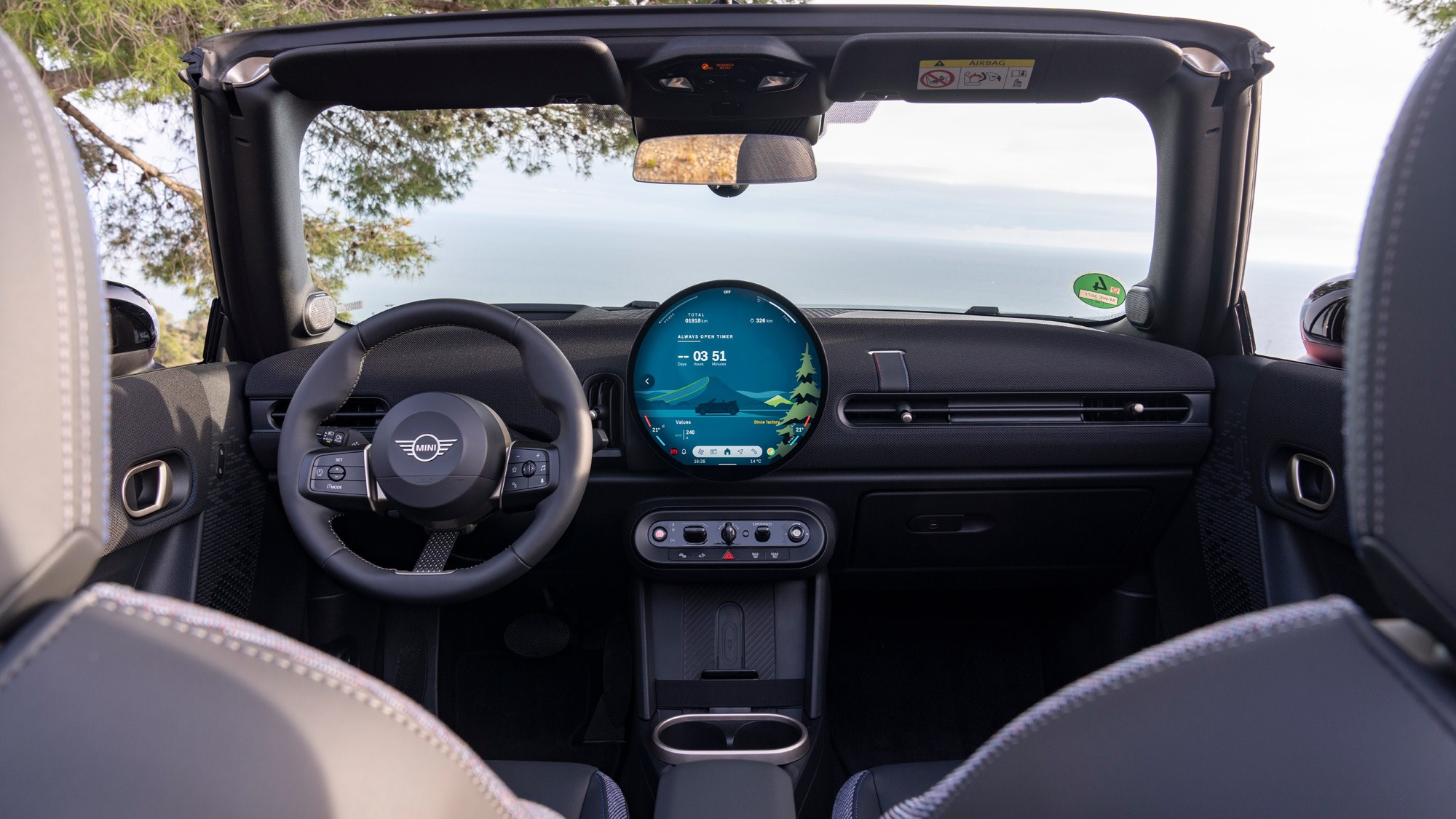
Having the temperature controls take up a permanent place on the side of the screen also helps usability, as does the nice, chunky physical steering wheel buttons – ideal if you’re wearing gloves.
Like a Cooper hatch, you won’t buy the Convertible for its practicality but there are four seats, with the rears only suitable for small adults or children. A wind deflector is a worthy investment to reduce wind noise, and the boot measures 160 litres with the roof down and 215 litres with it up. It’s small but perfectly usable if you travel light or know how to pack the boot with absolute precision.
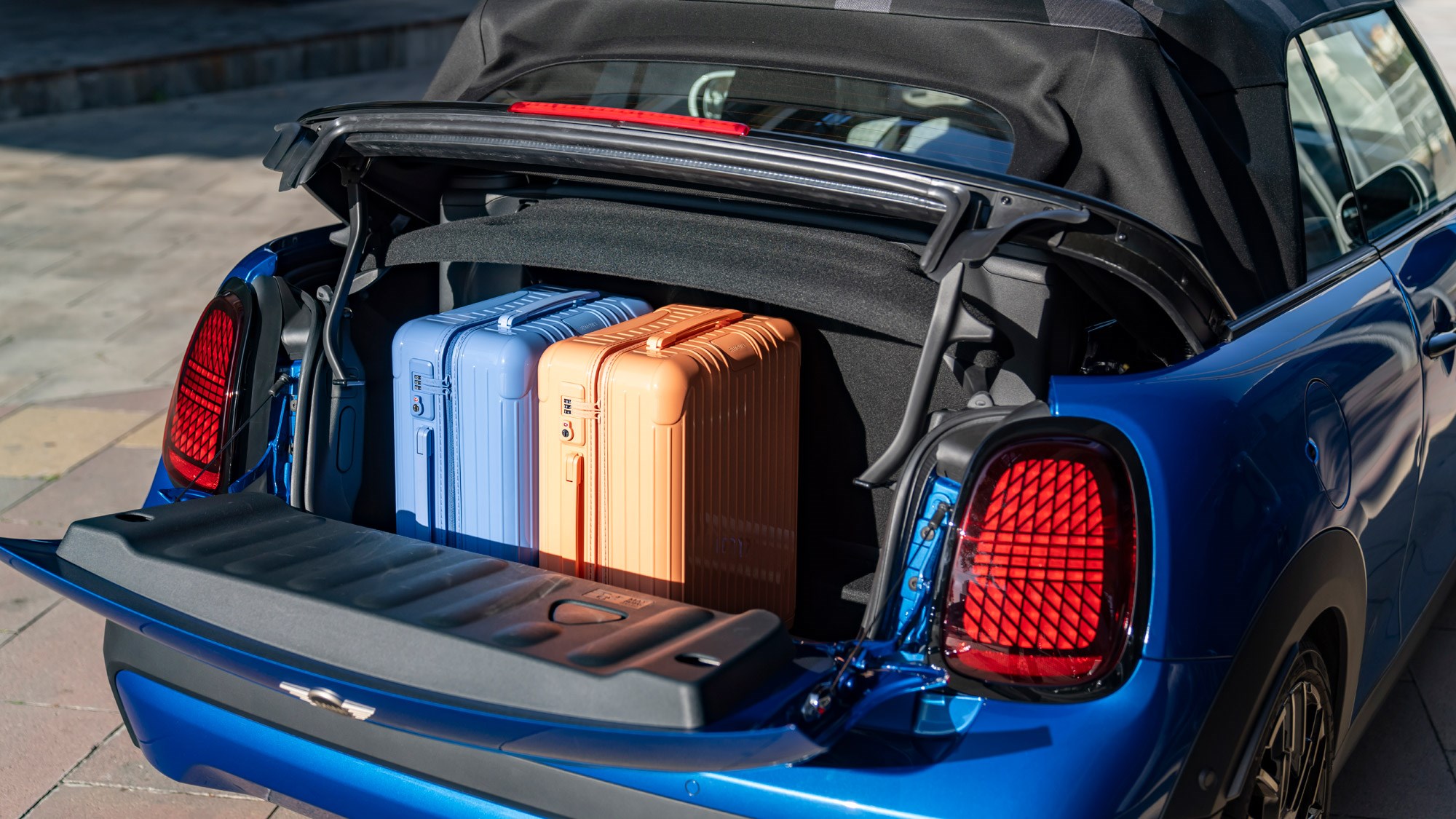
As for said folding roof, it’s fully automatic and can be opened in 18 seconds (and closed in 15 seconds) while travelling at up to 19mph. Like the Fiat 500C, there’s also the option to partly open it like a sunroof. Also hidden behind the headrests at the rear is Mini’s integrated rollover protection system that activates automatically as soon as the vehicle detects a risk of turning over.
Before you buy
Choose a Cooper C or Cooper S and there’s a choice of Classic, Sport and Exclusive trim levels, with prices starting from £27,270 for a C and £32,120 for an S.
Classic comes with rather cheap-looking 16-inch silver wheels and a black front grille, while Sport adds more aggressive styling with a redesigned front and rear apron, sports seats and black brake callipers that make it look like a John Cooper Works. Exclusive aims to be the classy one with its 17-inch grey alloys and silver-finished front grille. It also gets a rather smart blue upholstery.
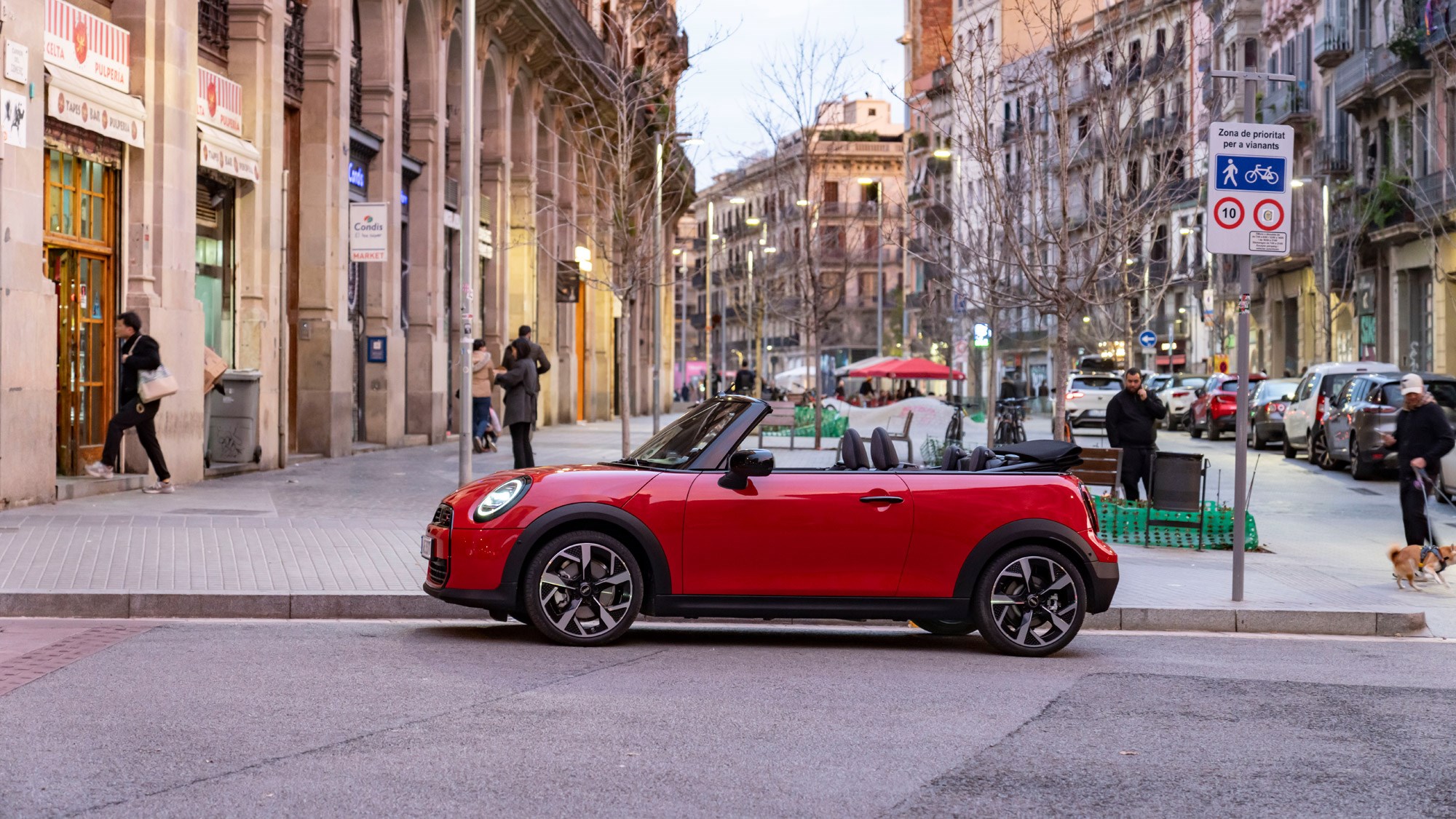
As already mentioned, we recommend a Sport model so you get those gearshift paddles and a revised gearbox, as well as a few choice options, which are split into three packs – Level 1, 2 and 3.
We strongly recommend the £2,000 Level 1 pack for its heated front seats, head-up display and wireless smartphone charging. The £2,700 Level 2 bundle is much the same but adds a Harman Kardon sound system. If you want all the bells and whistles, the pricey £5,200 Level 3 pack brings electric front seats, adaptive cruise control and an upgraded navigation system.
The John Cooper Works model starts from £37,130 though does come with the Level 2 option pack included as standard.
Verdict
Mini hasn’t messed with its Convertible recipe much for this new model and the result is a drop-top that perfectly fulfils its brief of being fun, stylish and usable. The cabin design is blessed with flair and there’s more than enough tech, the roof-down experience is accomplished and the handling is enjoyable.
Just pick your version carefully as the standard automatic gearbox really is not the best, and it can get very expensive if you don’t pick your options carefully.